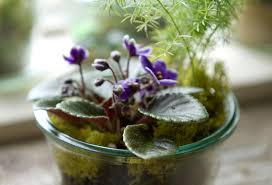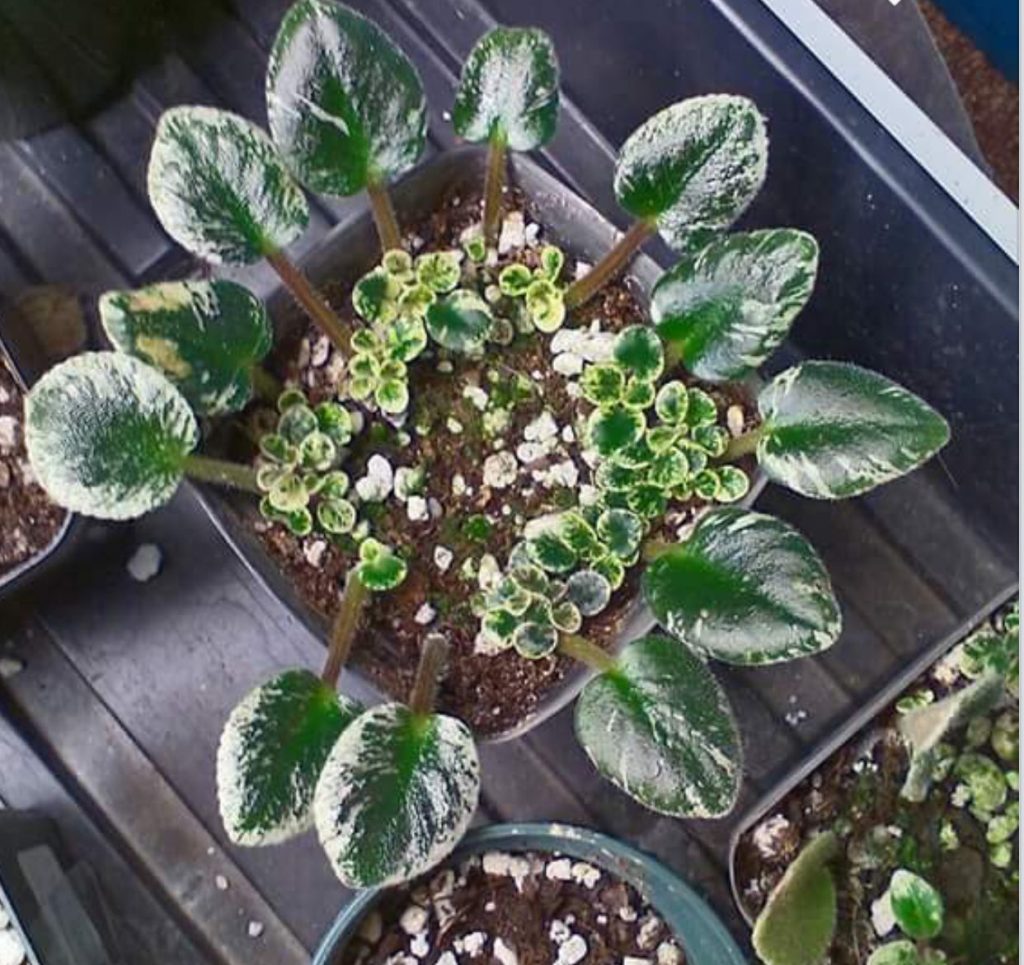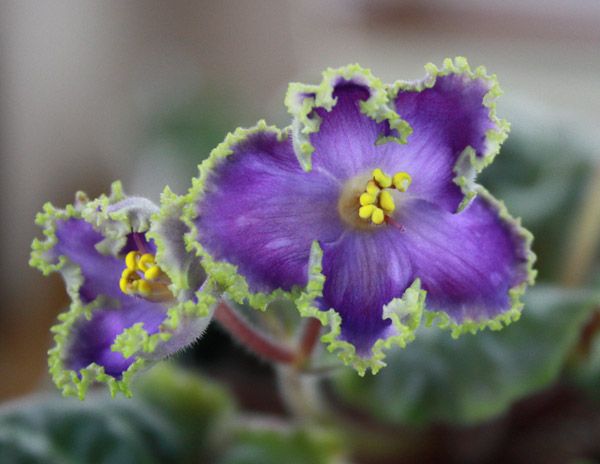One of the attractions that’s fed the “influencer’s” fiendish passion for promoting houseplants is probably that, in general, it’s hard to kill one – a houseplant that is. Anywhere that you are comfortable, be it conservatory, greenhouse or light-filled room, so will be whatever pet plant(s) you nurture. Three years ago, I acquired a rubber-tree (Ficus elastica) and a variegated dragon tree (Dracena reflexa). Living sculpture, I thought. Only three feet tall when purchased, they’re now taller than me and heading toward the twelve-foot high ridge beam. I hate to say it, but apart from their height – and now weight– they don’t change much. They are, sadly, the plant world’s equivalent of beige wall paint. As we evolve as gardeners, I’m sure we’ve all had houseplant collecting phases: I’ve passed through succulents, scented geraniums, and cacti and as interior decor they all share the burden of stultifying familiarity. Except for my African violets, abandoned when we made our transatlantic move.

I was drawn to these sweet little plants by childhood memories of helping my Grandmother to clear the dining room sideboard in preparation for Thanksgiving dinner, moving her array of African violets to the kitchen and the only other southeast-facing window for the duration of the holiday season. She must have had 30 plants with flowers in different shades of pale pink to darkest purple, some splashed, edged or solidly white, all in four-inch pots in little saucers. As a child I adored their fuzzy leafy rosettes framing the doll-sized bouquets of tender flowers. Her house was small and conservatively furnished in shades of brown and gold, so those violets provided a joyful – and much needed — pop of color as they went in and out of flower. All the while, their daily care gave her much joy and satisfaction (especially when her friends would lavish compliments on her green thumbness, and she’d reward them with rooted plantlets).

There’s been a lot of science over the past few years claiming to show how houseplants benefit health and well-being. Caring for a plant can lead, among other pluses, to a reduction in stress and improved cognitive awareness. Nurturing another living thing also boosts a sense of self-esteem, especially in children, and is a way to connect with nature where other opportunities are in short supply. However, recent science has cast doubt on the claim that houseplants improve air quality and is more of an idea than a reality; the fact is if you want to detox your living room or workspace, it’s better to open a window, or switch on the air filter.

Meanwhile, if beauty is your quest, and you want to get a flavor of this hugely varied plant palette, and you use Facebook, join the African Violet Nerds group. Some of the plants pictured are from Southeast Asia, where, I’ve noticed, they get some fantastic results breeding outrageous forms of our comparatively staid houseplant familiars (not surprising since so many are tropical in origin). And when you are hooked and ready to acquire plants, the go-to is The African Violet Society of America, devoted to “Promoting and Growing African Violets since 1946”. The AVSA provides its members with a wide range of advice, ideas and connection to this section of the plant world. I was particularly touched by a member’s story, A Beginner’s Journey, a memoir larded with advice on how to grow “America’s Favorite Houseplant.” The author references two mail-order growers, The Violet Barn in Naples, New York, and Lyndon Lyon Greenhouses of Dolgeville, New York: The former offers straightforward plant care tips

that dispels any misguided ideas about cultivation – basically, plenty of light, open free draining peat-based soil, water routinely, use a balanced feed, but avoid specially formulated African violet fertilizers that can deplete soil nitrogen. The later has a section of 16 lavishly petalled, surreally tinted flowers supported in some varieties with variegated foliage, all from Russian/Ukrainian growers. Plants may not be as important for a healthy environment as once thought, but there’s no doubt that they can bring people together—or my name’s not Pollyanna.
© Ethne Clarke, 2019
For details and membership to African Violet Society of America, visit their website at http://www.avsa.org. To read the beginner’s memoir go to http://www.avsa.org/sites/default/files/files/ABeginnersJourney.pdf
Investigate the terrariums on offer by Terrain at https://www.shopterrain.com/categories/terrariums?q=terrarium
Learn about pastel artist Patricia Clements and her work and where to purchase prints at https://www.patriciaclementsart.com
View The Violet Barn’s online catalogue and information on growing and care at https://www.violetbarn.com.
Lyndon Lyon Greenhouses and their catalogue, including the Russian/Ukrainian hybrids can seen at https://www.lyndonlyon.com/
And don’t forget The African Violet Nerds on Facebook – their followers are growing by leafs and blooms. I mean leaps and bounds…..


